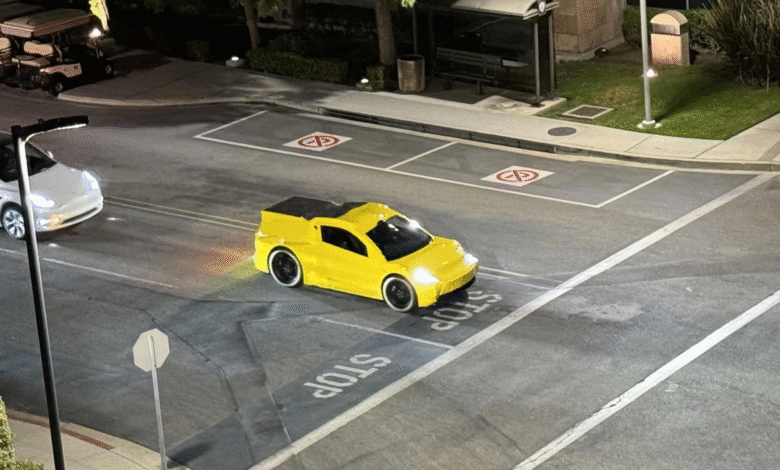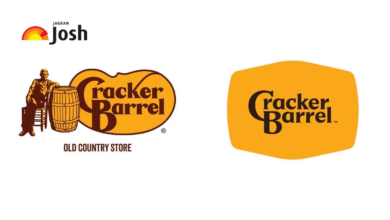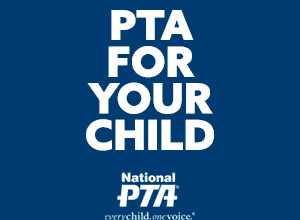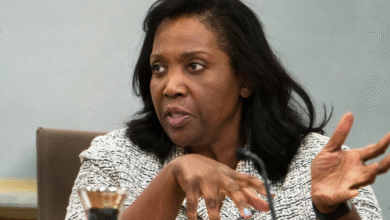Tesla Robotaxi Incidents Raise Concerns in Austin

Recent incidents involving Tesla robotaxis have raised eyebrows and prompted investigations as footage of perplexing behaviors became viral online. The National Highway Traffic Safety Administration (NHTSA) is now closely scrutinizing these events, particularly after the debut of the Austin robotaxi service, which saw 10 to 20 Tesla Model Y vehicles equipped with cutting-edge driverless technology piloted around the city. Videos have surfaced showcasing alarming incidents, such as a robotaxi driving against traffic and abruptly braking near stationary police vehicles, stirring concerns about autonomous vehicle safety. Tesla’s ambitious rollout in Austin marks a significant milestone, although it has already attracted regulatory attention due to these troubling occurrences. The implications of these Tesla robotaxi incidents could influence future safety regulations and shape public perception of autonomous driving technologies in the coming years.
The launch of Tesla’s autonomous ridesharing service in Austin represents a pivotal moment in the evolution of self-driving vehicles, prompting both excitement and apprehension. With a fleet of Model Y SUVs outfitted with the latest FSD software, the company aims to revolutionize urban mobility, yet recent footage of unusual driving behaviors has triggered an inquiry by federal regulators. As discussions surrounding autonomous transportation escalate, the concern for passenger and pedestrian safety continues to dominate the narrative. This service, which operates under limitations and only for select participants, reflects Tesla’s ongoing commitment to pioneering innovations in driverless technology amid growing scrutiny and competition from other players in the robotaxi industry. The ongoing NHTSA Tesla investigation highlights the delicate balance between technological advancement and regulatory oversight essential for public safety.
Overview of Tesla Robotaxi Incidents
Recent incidents involving Tesla robotaxis in Austin have raised serious concerns about the safety and reliability of autonomous vehicles. Videos circulating on social media have shown these vehicles displaying erratic behaviors such as driving on the wrong side of the road and making abrupt stops in traffic. The National Highway Traffic Safety Administration (NHTSA) has taken notice, reaching out to Tesla for further insights into these troubling occurrences. Such incidents highlight the challenges that accompany the integration of new technology in everyday environments, particularly in densely populated urban areas.
These incidents caught on camera are part of a broader narrative surrounding the deployment of Tesla’s robotaxi service, which debuted in Austin with a fleet of Model Y vehicles equipped with the latest driverless technology and supervised by a human valet. This innovative service, although met with excitement and an 8% spike in Tesla shares, faces scrutiny as regulatory bodies like the NHTSA investigate. The challenge lies in ensuring that these autonomous systems can safely navigate complex road scenarios without causing harm to passengers or pedestrians.
The Role of NHTSA in Regulating Tesla Robotaxis
The National Highway Traffic Safety Administration (NHTSA) plays a pivotal role in overseeing the safety of motor vehicles, including the new wave of autonomous vehicles like Tesla’s robotaxis. Following viral incidents involving the erratic behavior of these robotaxis in Austin, the NHTSA has initiated contact with Tesla to gain clarity on the safety measures in place. The agency emphasizes that it does not pre-approve technology but rather holds manufacturers accountable for adhering to federal motor vehicle safety standards. This approach places additional pressure on Tesla to ensure that their autonomous systems function reliably before being mass-released to the public.
Moreover, the NHTSA’s ongoing investigation into Tesla’s FSD (Full Self-Driving) technology, which has previously been associated with significant accidents, underscores the necessity of thorough scrutiny as the company attempts to innovate. With authorities emphasizing road safety, Tesla must navigate regulatory landscapes while maintaining public trust, especially after incidents that could undermine confidence in its autonomous vehicle safety.
Comparing Tesla’s Robotaxi Launch with Competitors
Tesla’s introduction of its robotaxi service in Austin signifies its ambition in the realm of autonomous vehicles; however, competition is rapidly intensifying. Companies such as Waymo have already demonstrated significant milestones, achieving over 10 million paid rides, showcasing a more established operational framework. Rival firms in China, like Baidu’s Apollo Go, WeRide, and Pony.ai, have also launched successful commercial robotaxi services, further challenging Tesla’s position in the market. With competitors leading the way in operational success, Tesla needs to ensure its robotaxi service can deliver consistent performances and safety assurances to stand out.
The contrast between Tesla’s ambitious timelines and the realities of implementation exacerbates the scrutiny it faces. While Elon Musk has historically made bold predictions about the speed of achieving full autonomy, the ongoing glitches and regulatory investigations surrounding Tesla’s offerings indicate a needing reevaluation of its rollout strategies. As the market grows increasingly competitive, Tesla must focus on addressing operational issues while also ensuring that it complies with regulations and maintains consumer trust.
Challenges Faced by Tesla’s Model Y Robotaxis
The Tesla Model Y, which serves as the backbone of the company’s robotaxi service, faces its own set of challenges both in terms of technological performance and public perception. Reports of erratic driving behavior coincide with the launch of the pilot program, raising questions about the effectiveness of Tesla’s newest FSD Unsupervised software. These issues have prompted concern among both users and regulators, who must assess the viability of such technology in real-world applications and its ability to operate safely in a diverse range of driving conditions.
Additionally, while Tesla’s Model Y boasts impressive specifications and innovative technology, the incidents that have surfaced signify deeper underlying development issues. Missteps in autonomous vehicle algorithms can lead to potentially dangerous situations, putting not only passengers but also pedestrians and other road users at risk. As the company aims to refine its autonomous vehicle safety systems, it must first confront these challenges to ensure that the Model Y can reliably meet the expectations of an increasingly demanding market.
Safety Protocols in Tesla’s Robotaxi Service
Safety is paramount in the deployment of autonomous vehicles, and Tesla’s robotaxi service is no exception. With incidents of erratic driving behavior documented, it has become critical for Tesla to reinforce its safety protocols surrounding its Model Y robotaxis. Operating with a human safety supervisor in the passenger seat is a step toward ensuring that immediate interventions can be made when the technology falters. However, the efficacy of this measure is called into question when analyzed against the backdrop of the recent chaotic incidents.
Furthermore, the safety protocols must encompass comprehensive training for all personnel involved in the robotaxi program, alongside continuous assessment and updates to the autonomous vehicle software. As Tesla navigates the complexities of robotaxi integration, enhancing safety measures and addressing the shortcomings in current systems will be vital in winning over both regulators and the public.
Public Perception and Future of Tesla Robotaxis
Public perception plays a significant role in the success of Tesla’s robotaxi service. The recent incidents have not only attracted regulatory attention but have also sparked concerns among potential riders regarding the safety and reliability of riding in a driverless vehicle. As these incidents circulate on social media, they paint a worrying picture that could deter interested users from participating in Tesla’s early access program.
In order to cultivate a positive public perception, Tesla must proactively communicate its commitment to safety, transparency, and the ongoing improvements being made. By addressing public concerns honestly and providing updates on how they plan to enhance the robotaxi experience, Tesla can build greater trust with consumers, business partners, and regulators alike, ultimately paving the way for a more successful introduction of their autonomous services moving forward.
Federal Regulations Impacting Tesla’s Robotaxi Technology
The landscape of federal regulations surrounding autonomous vehicles is complex and continuously evolving. The NHTSA’s proactive stance regarding Tesla robotaxi incidents is indicative of the broader regulatory climate that all companies developing autonomous technology must navigate. With the agency highlighting its role in ensuring vehicle safety, Tesla faces the dual challenge of innovating its technology while staying compliant with stringent safety regulations.
Moreover, the scrutiny that Tesla faces is part of a larger conversation about the need for a cohesive regulatory framework around autonomous vehicles. As incidents raise alarms about safety, both regulators and companies must collaborate to establish clear guidelines that prioritize public safety while promoting technological advancement. How Tesla manages these federal regulatory challenges will significantly influence the future trajectory of its robotaxi service.
The Financial Implications of the Robotaxi Rollout
The financial implications of Tesla’s robotaxi service rollout are significant, particularly in light of the 8% spike in its stock following the introduction of the service. Investors are keenly observing how the performance of these autonomous vehicles will influence Tesla’s market position and profitability. As the botched implementation of certain technological features has come to light, it raises questions about potential impacts on future sales and customer loyalty.
Moreover, the financial outlook for Tesla relies heavily on the successful integration of its robotaxi fleet into the market. If the issues surrounding safety and operational efficiency are not addressed swiftly, they could hinder the company’s ability to capitalize on the growing autonomous vehicle trend, limiting their ability to remain competitive against other players such as Waymo and Baidu’s Apollo Go.
Tesla’s Vision for the Future of Transportation
Elon Musk’s vision for Tesla extends far beyond electric vehicles; it encompasses a future where autonomous robotaxis transform the landscape of transportation. As the company attempts to revolutionize travel with its introduction of robotaxis in Austin, the ambition is to redefine conventional transport systems. The promise of a fleet of self-driving vehicles capable of providing safe and efficient rides at an affordable price is an appealing prospect that has the potential to disrupt traditional taxi and ride-hailing services.
However, this vision remains contingent upon overcoming current technological and regulatory hurdles. Despite the setbacks and public incidents, Tesla continues to push the boundaries of what autonomous vehicles can achieve. Balancing ambitious innovation with the reality of operational safety issues will be key components in realizing this vision and ensuring that Tesla remains at the forefront of the autonomous transportation revolution.
Frequently Asked Questions
What are the recent Tesla robotaxi incidents reported in Austin?
Recent Tesla robotaxi incidents in Austin, Texas involve videos showing these autonomous vehicles behaving erratically, such as driving the wrong way on roads and making abrupt stops in traffic. The National Highway Traffic Safety Administration (NHTSA) is investigating these incidents after they were widely shared on social media.
How has NHTSA responded to Tesla robotaxi incidents caught on video?
The NHTSA has reached out to Tesla for more information regarding the robotaxi incidents caught on video. The agency is closely monitoring these occurrences as part of their ongoing investigation into Tesla’s Full Self-Driving (FSD) technology and its operational safety.
What technology is being utilized in the Tesla robotaxi service in Austin?
The Tesla robotaxi service in Austin operates with Model Y SUVs equipped with the latest Full Self-Driving (FSD) Unsupervised software. This rollout includes a human safety supervisor seated in the front passenger seat during operations.
Are Tesla robotaxi incidents impacting the company’s stock performance?
Despite the controversial robotaxi incidents in Austin, news of the launch actually contributed to an 8% increase in Tesla’s shares. However, concerns about safety with the FSD technology remain a critical focus for investors.
What challenges is Tesla facing with its robotaxi service launch in Austin?
Tesla’s robotaxi service launch in Austin has faced challenges including incidents of erratic driving and a limited rollout that failed to meet Elon Musk’s previous promises of full autonomy. The service is currently invite-only, operating with fewer than 20 vehicles as the company navigates regulatory scrutiny.
What does the NHTSA investigation into Tesla’s robotaxi incidents involve?
The NHTSA investigation into the Tesla robotaxi incidents involves assessing reports of potential safety defects stemming from the behavior of the vehicles, particularly those using the FSD technology. This follows a prior investigation into Tesla’s FSD Beta system related to previous accidents.
What safety measures are in place for Tesla’s robotaxi service in Austin?
Safety measures for Tesla’s robotaxi service in Austin include having a human safety supervisor in the front passenger seat and operating only during daylight hours and in good weather conditions to minimize risks.
How does Tesla’s robotaxi service compare to other companies in the industry?
While Tesla launched its robotaxi service in Austin, competitors like Waymo have already completed over 10 million paid trips with their commercial fleets, showcasing a more established presence in the autonomous vehicle market.
What future developments are anticipated for Tesla’s robotaxi technology?
Future developments for Tesla’s robotaxi technology remain uncertain, as the company has faced delays in achieving full autonomy which was previously promised by Elon Musk. Ongoing investigations by regulators will likely shape the trajectory of this technology.
How can Tesla ensure the safety of its robotaxi fleet moving forward?
To ensure the safety of its robotaxi fleet, Tesla may need to enhance its software algorithms, increase testing under varied conditions, engage in transparent communication with regulators, and prioritize safety validation processes before a broader rollout.
| Key Point | Details |
|---|---|
| NHTSA Inquiry | NHTSA pressed Tesla for information about robotaxi incidents after videos surfaced on social media. |
| Robotaxi Launch | Tesla began its robotaxi service in Austin with Model Y vehicles and a human valet. |
| Stock Impact | The rollout led to an 8% increase in Tesla shares on Monday. |
| Incidents Reported | Videos showed robotaxis driving erratically, including wrong-way driving and unnecessary hard braking. |
| Regulatory Response | NHTSA is in contact with Tesla to gather more details about the incidents. |
| Comparative Competition | Waymo and other companies are actively expanding their robotaxi services, contrasting with Tesla’s rollout. |
Summary
Tesla Robotaxi incidents have generated significant concern, particularly regarding safety and regulatory compliance. The recent launch of Tesla’s robotaxi service in Austin faced immediate scrutiny after videos displaying erratic driving behaviors were shared online. The National Highway Traffic Safety Administration (NHTSA) responded by seeking further information from Tesla. While this pilot program marks a step forward for Tesla, the challenges it faces highlight the hurdles in achieving fully autonomous driving amidst increasing competition in the robotaxi market.




